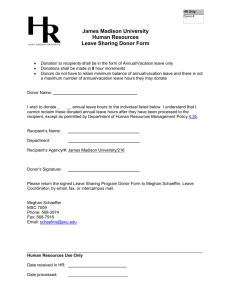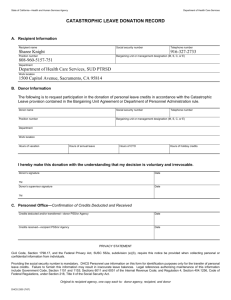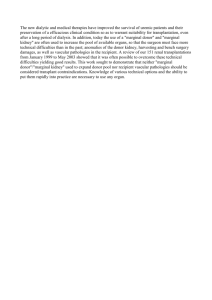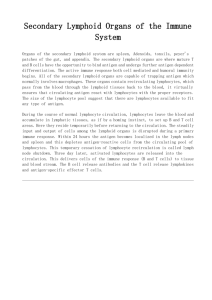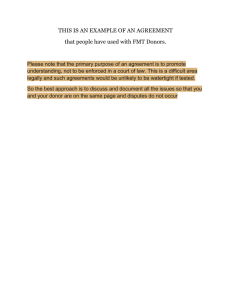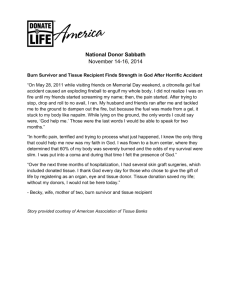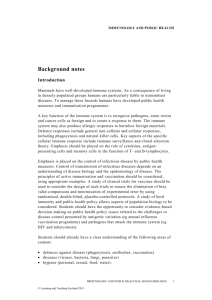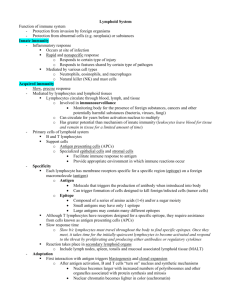Immunology CA (MCQ) 06/11/04
advertisement
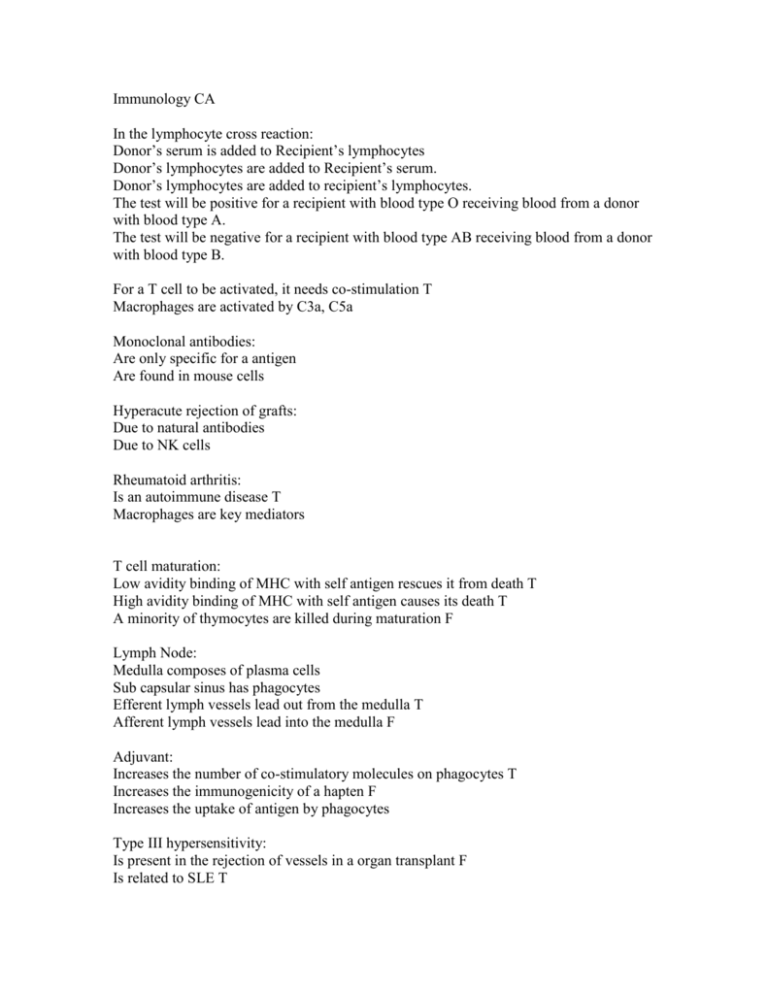
Immunology CA In the lymphocyte cross reaction: Donor’s serum is added to Recipient’s lymphocytes Donor’s lymphocytes are added to Recipient’s serum. Donor’s lymphocytes are added to recipient’s lymphocytes. The test will be positive for a recipient with blood type O receiving blood from a donor with blood type A. The test will be negative for a recipient with blood type AB receiving blood from a donor with blood type B. For a T cell to be activated, it needs co-stimulation T Macrophages are activated by C3a, C5a Monoclonal antibodies: Are only specific for a antigen Are found in mouse cells Hyperacute rejection of grafts: Due to natural antibodies Due to NK cells Rheumatoid arthritis: Is an autoimmune disease T Macrophages are key mediators T cell maturation: Low avidity binding of MHC with self antigen rescues it from death T High avidity binding of MHC with self antigen causes its death T A minority of thymocytes are killed during maturation F Lymph Node: Medulla composes of plasma cells Sub capsular sinus has phagocytes Efferent lymph vessels lead out from the medulla T Afferent lymph vessels lead into the medulla F Adjuvant: Increases the number of co-stimulatory molecules on phagocytes T Increases the immunogenicity of a hapten F Increases the uptake of antigen by phagocytes Type III hypersensitivity: Is present in the rejection of vessels in a organ transplant F Is related to SLE T Type I hypersensitivity: Is due to the activation of IgM F Is mediated somewhat by prostaglandins and leukotrienes T Is the most common cause of hypovolemic shock F In the alternate complement pathway: A perforin complex is formed that lyses cells T Complement C3B is involved T Formation of anitigen-antibody complexes are needed F Phagocytes have Fc receptors on their surface. T Ig A in saliva Attaches to mucosal surfaces by its Fc component F Is present as a dimer T Has a Secretory component T Has a J chain attached to it T Is different from the IgA in the Serum T The heavy chain of IgG: Contains disulphide bonds Can be acted on by papain T Can differ in different isotypes T Contains variable regions T IgG and IgA differ: In the presence of subtypes F In the ability to cross the placenta T In the ability to activate complement An old lady with diabetes and leg wounds was admitted to the hospital where she complained of joint pain. She was administered Valacixib: Valacixib is a selective Cox-1 inhibitor F There is a danger that her wounds will take longer to heal as Valacixib is a Cox-2 inhibitor T She may get venous thrombosis due to an increase in thromboxane A2 T She may have renal problems T It only has analgesic properties but no anti-inflammatory properties F A man was given aspirin: He may suffer from heartburn. T Aspirin is an analgesic as it sensitizes nociceptive fibres F Takng Glucocorticoids increases: 5-lipoxygenase F lipocortin T Neural endopeptide T iKB-a T Phospholipase A2 F The following drugs have the following mechanism: MMF: inhibits iMP dehydrogenase T Sirolimus: inhibits the signal transduction following the binding of IL-2 to the receptor T Azathioprine: inhibits ? F Antilymphocyteglobulin: inhibits the CD3 receptor F OKT3: targets lymphocytes by ADCC F Regarding Primary immunodeficiency: B cell defect is the most common T Present if there is 5 or more respiratory tract infections Is more common than secondary immunodeficiency F Most of them are hereditary T cell defects: SCID leads to T cell defect T Occurs at infancy T Gene therapy is a way of treatment T Not prone to fungal infections F Western blot involves electrophoresis of DNA of HIV F requires an oligonucleotide probe used as a confimatory test to ELISA
